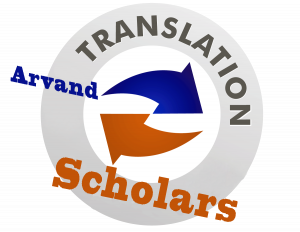Definition of Translation
Translation is a mental activity in which a meaning of given linguistic discourse is rendered from one language to another. It is the act of transferring the linguistic entities from one language in to their equivalents in to another language. Translation is an act through which the content of a text is transferred from the source language in to the target language (Foster, 1958). The language to be translated is called the source language (SL), whereas the language to be translated into or arrived at is called the target language (TL). The translator needs to have good knowledge of both the source and the target language, in addition to a high linguistic sensitivity as he should transmit the writer’s intention, original thoughts and opinions in the translated version as precisely and faithfully as possible.
Due to its prominence, translation has been viewed differently. According to Ghazala (1995), “translation is generally used to refer to all the process and methods used to convey the meaning of the source language in to the target language” (P.1. Ghazala’s definition focuses on the notion of meaning as an essential element in translation. That is, when translating, understanding the meaning of source text is vital to have the appropriate equivalent in the target text thus, it is meaning that is translated in relation to grammar, style and sounds (Ghazala, 1995).
Translation is a process and a product. According to Catford (1995), translation is the replacement of textual material in one language (SL) by equivalent textual material in another language (TL) “, (p 20). This definition shows that translation is a process in the sense that is an activity. Performed by people through time, when expressions are translated in to simpler ones in the same language (Rewording and para-phrasing). It can be done also from one language into another different language. Translation is, on the other hand, a product since it provides us with other different cultures, to ancient societies and civilization life when the translated texts reaches us (Yowell and Mutfah, 1999).
REFERENCES:
Catford, J. (1995) Alinguistic Theory of Translation. London. Oxford University Press.
Foster, M. (1958) Translation from/in Farsi and English. Retrieved April, 2007, from http://www.parasa.ts.com/index.htm.
Ghazala, Hasan, (1995) Translation as problems and solutions (4th ed.) Syria: Dar Elkalem ElArabi.
Yowell, A. Muftan, S. L (1999) principles of Translation. Dar Annahda Alarabiya.
Types of Translation
Because of the dramatic evolution of the professional translation industry, there are currently new terms and words being used to describe translation service specializations that don’t fall under general categories like human translation or machine translation. This article intends to serve as a brief guide of sorts to some of the more common and basic of these recently coined expressions. Here are just some of them:
General Translation: The simplest of translation types, a general translation allows a translator quite a lot of leeway because its source material mostly uses layman terms and ordinary, everyday speech. There’s no need to understand special terminologies, and most translation work fall into this particular type.
Legal Translation: As one of the more complex and complicated professional translation types out there, legal translation is best described as the translation of treaties, contracts, and many other legal documents. A translation service is responsible for both understanding politico-legal and socio-cultural context behind a legal text and translating it in such a way that a target audience with a different cultural/political/societal background could readily understand. Only a human translation agency that knows both source and target cultures could pull a decent legal translation job off. Nevertheless, even specialists like those tend to use professional legal assistance as well, because one simple slipup or mistranslation of a contract’s passage could lead to disastrous consequences.
Commercial Translation: Just like its legal counterpart, a commercial translation or business translation (not to be confused with advertising translation) requires a translator to have specialist translation skills and business jargon knowledge in order to translate a business’s every report, tender document, company account, and correspondence. There’s a bit of overlap between commercial translation and legal translation as well, in the sense that companies tend to handle legal paperwork alongside business paperwork.
Administrative Translation: “Administrative” can mean many things, but in the context of translation, it merely refers to translating managerial texts used in different corporations, businesses, and organizations. This translation type also overlaps with commercial translation, but only in the sense that the vast majority of administrative translation can be considered commercial translation as well, but not all commercial translation is administrative in nature.
Literary Translation: As its name suggests, literary translation refers to translation done for literature such as poems, plays, short stories, and novels. Just as general translation is the simplest form and legal translation is the most difficult form, many people in the industry consider literary translation as the highest form of translation. The reason behind this is because literary translation goes beyond mere translation of context; a literary translator must be proficient in translating humor, cultural nuances, feelings, emotions, and other subtle elements of a given work. Conversely, there are those who allege that literary translation is impossible, as with the case of translating poetry.
—
Arvand Translation Scholars is the world’s fastest professional translation service. Arvand Translation Scholars provides Fast, High Quality Professional Translation on a 24/7 basis thanks to a community of over 1000 certified translators from all over the world.

